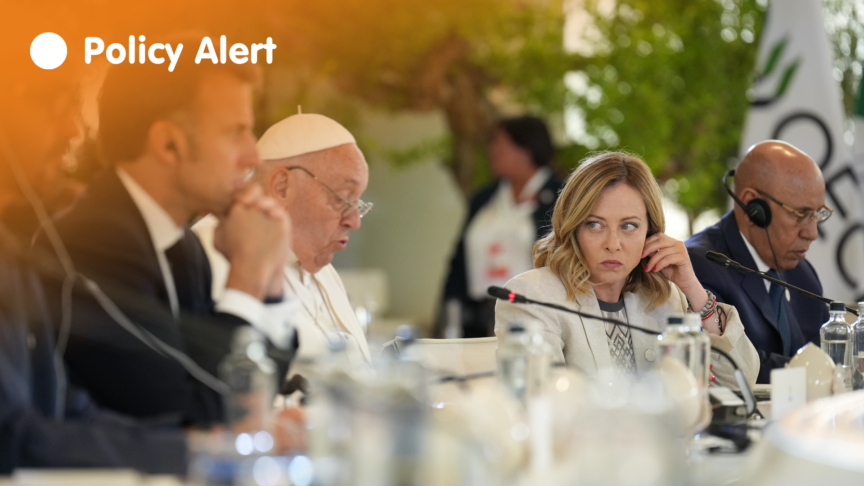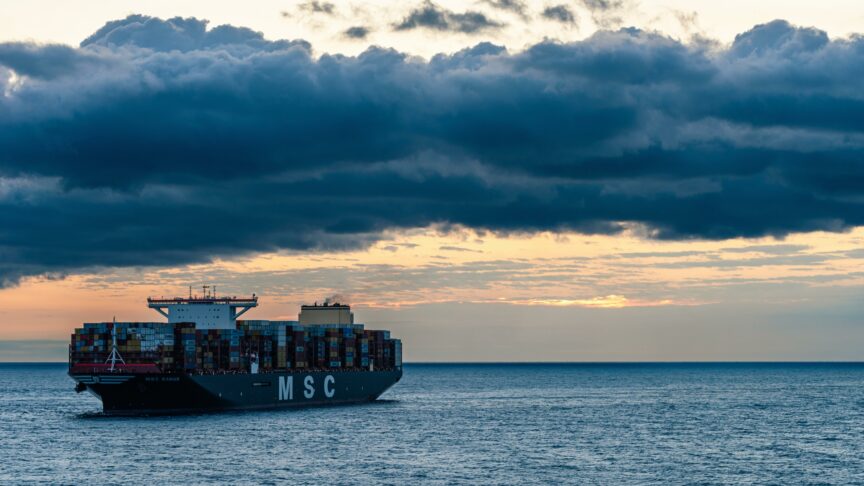Russia’s quiet military revolution
Russia is clearly preparing for offensive operations, but the likelihood of action depends on the quality of Europe’s own defence
Russia has surprised the West with its military capacity twice in the past three years. [1] First, in Ukraine, Russian armed forces overturned Western assumptions about their inefficiency with a swift and coordinated ‘hybrid war’, combining subversion and infiltration with troop deployment to gain an early military advantage. Then, in Syria, Russia used military force outside the borders of the former Soviet Union for the first time since the end of the cold war.
The current Russian leadership has never accepted the post-1989 European order, including the norms, rules, and conventions agreed by the last generation of Soviet leadership. The Kremlin does not seek incremental changes to the current order but aspires to create a totally new one. It regards post-Soviet borders as something to be revised – with military force, if necessary. Until 2014, Russia was not able to underpin this desire for a revision of the European order with force.
However, Russian military thinkers and planners have been creative in trying to overcome the multiple disadvantages of the Russian military apparatus vis-à-vis its Western counterparts. They have implemented far-reaching military reforms to create more professional and combat-ready armed forces that can swiftly deploy abroad, backed by expertise in non-conventional warfare tactics such as subversion and propaganda.
Military reforms
While in the past the Russian armed forces needed years to gear up for military confrontation, they now have the ability to react quickly and strike without warning. However, the Russian authorities planned their military reform in three phases, starting with the reforms that would take the longest to produce results. First, increasing professionalism by overhauling the education of personnel and cutting the number of conscripts; second, improving combat-readiness with a streamlined command structure and additional training exercises; and only third, rearmament. The initial stages were designed to ensure that existing equipment was ready to use, and to make the organisation that uses it more effective and professional. Indeed, to successfully intervene in Russia’s neighbourhood, Moscow does not necessarily need the latest cutting-edge defence technology. Rather, such interventions would have to be precisely targeted and quickly executed to pre-empt a proper Western reaction. But Western analysts’ focus on the fact that the rearmament stage of the reforms is incomplete and delayed has caused them to overlook the success of the other two stages. These have already given Russia a more effective and combat-ready military, as demonstrated by its fast and coordinated intervention in Ukraine.
Non-conventional tactics
Russia’s military efforts are embedded in a multi-pronged drive to overwhelm, subvert, and subdue the opposing society. This drive is much more ruthless and effective than the West’s ‘comprehensive approach’ – the coordination of civilian and military efforts in conflicts and crises. As leading Russian analysts stated at the 2012 Valdai Discussion Club: “The distinction between ‘civilian’ and ‘military’ segments of society is disappearing. The aim of a military campaign is to impact not only the enemy army, but also its society, understood in terms of its cultural as well as its physical aspects. This trend makes it necessary to conduct joint ‘civilian-military’ operations, rather than purely military ones.”[2]
These efforts are aided by Russia’s paramilitary and non-military forces. In the Russian Federation, the Ministry of Interior has about 170,000 men in ready-formed and trained paramilitary units at its disposal to tackle domestic unrest, terrorism, and border violations.[3] There is no need for the armed forces to supplement them in case of an emergency. Similarly, natural disasters and humanitarian aid are taken care of by the Ministry for Emergency Situations, which also has its own troops. These paramilitary and non-military forces would play an important role if Russia carried out a full invasion of one of its neighbours. Both services were mobilised in April 2014 when the Russian military was preparing its assault on Ukraine.
In Ukraine, Russia has engaged not only in a conventional war but also in wars of subversion and propaganda, and in multiple disinformation campaigns at home and abroad. There is a trade and financial war going on, in which Russia tries to weaken the Ukrainian economy by cutting off imports, selectively harming entrepreneurs that support the new government, and corrupting others. This operates alongside a multi-pronged campaign by political representatives, intelligence services, and Russian businesses to undermine European support for Ukraine.
Strategic consequences for Europe
Russia’s military modernisation and re-emergence as an expansionist, revisionist actor on Europe’s eastern borders has profound strategic consequences for Europe. Little that was true for Europe’s security in the 1990s and early 2000s is still valid. However, the situation Europe faces today is not a repetition of the cold war. While there is again a systemic and ideological conflict between the democratic West and a revanchist Russia, Russia has neither the will nor the capacity to compete with the West on a global scale. But even if Russia is unable to shape world politics, it may be able to spoil it. And, as its expansionist aims threaten the very existence of some of the EU’s eastern member states, the Russian threat will be a much more serious challenge for Europe than for anybody else on the planet.
The European defence establishment has until now been confident that Russia’s armed forces could be checked, at least in qualitative terms. However, this qualitative advantage applies to few European NATO members. France, the United Kingdom, and Germany have armed forces of superior quality to Russia’s, but issues of deployability, readiness, and quantity of ammunition could put this qualitative advantage into question. Russia could now overwhelm any of the countries in the post-Soviet sphere if they were isolated from the West, but it lacks the capacity for effective long-term military action further afield, such as in Syria.
Russia is clearly preparing itself for offensive operations. It could exploit the weaknesses of its Western neighbours to achieve strategic surprise, but big risks and uncertainties for Russia are attached to these options. Much will depend on how Western leaders react to Russian provocations in the case of a crisis. Hence the challenge is more political than military: only credible political coherence, solidarity, and deterrence can prevent military adventurism. Whether such adventurism will hit the European periphery or Europe itself will largely depend on the state of Europe’s defence.
Europe should develop a united political response to Russian expansionism, including a coordinated position on nuclear deterrence, while preparing for hybrid scenarios.
The initial reaction to an unconventional, subversive Russian military operation should resemble stabilisation or crisis intervention rather than traditional defence. Rapid and high-quality deployment would be more important than striking power for spearhead forces, because they first have to deny unconventional forces access to critical infrastructure and administrative facilities. Close cooperation with non-military state authorities would be essential.
In the second phase of the response to Russian aggression, Europe would have to deploy forces with sufficient striking power and sustainability to deny Russian forces the option of an armed incursion, or, if that has already happened, to stop and repel it.
Given the strong transatlantic dimension of European defence, especially the nuclear aspect, it seems obvious that NATO is the primary arbiter of a new European defence policy. But it would be unwise to forget the EU’s role. Many of the EU’s assets developed for crisis response (such as special police or Gendarmerie forces, and civil administration assets) will be useful in a hybrid scenario, either in the European neighbourhood or in the EU itself.
Last but not least, Article 42 (7) of the Treaty on European Union, which guarantees the security of member states, is still a reserve framework in case NATO decisions are blocked by obstructive member states. It also covers Finland and Sweden – both non-NATO members facing an increasingly assertive Russia. The exploration of common defence preparation with these Nordic non-aligned members will be important.
[1] Adapted from Gustav Gressel, “Russia’s quiet military revolution and what it means for Europe”, ECFR Policy Brief, 12 October 2015, available at https://ecfr.eu/publications/summary/russias_quiet_military_revolution_and_what_it_means_for_europe4045.
[2] Mikhail Barabanov, “Changing the Force and Moving Forward After Georgia”, in Colby Howard and Ruslan Pukhov (eds), Brothers Armed, Military Aspects of the Crisis in Ukraine (East View Press: Minneapolis, 2014),
[3] The Military Balance 2015, The International Institute for Strategic Studies (Routledge: London, 2015), p. 197 (hereafter, The Military Balance 2015).
The European Council on Foreign Relations does not take collective positions. ECFR publications only represent the views of their individual authors.


